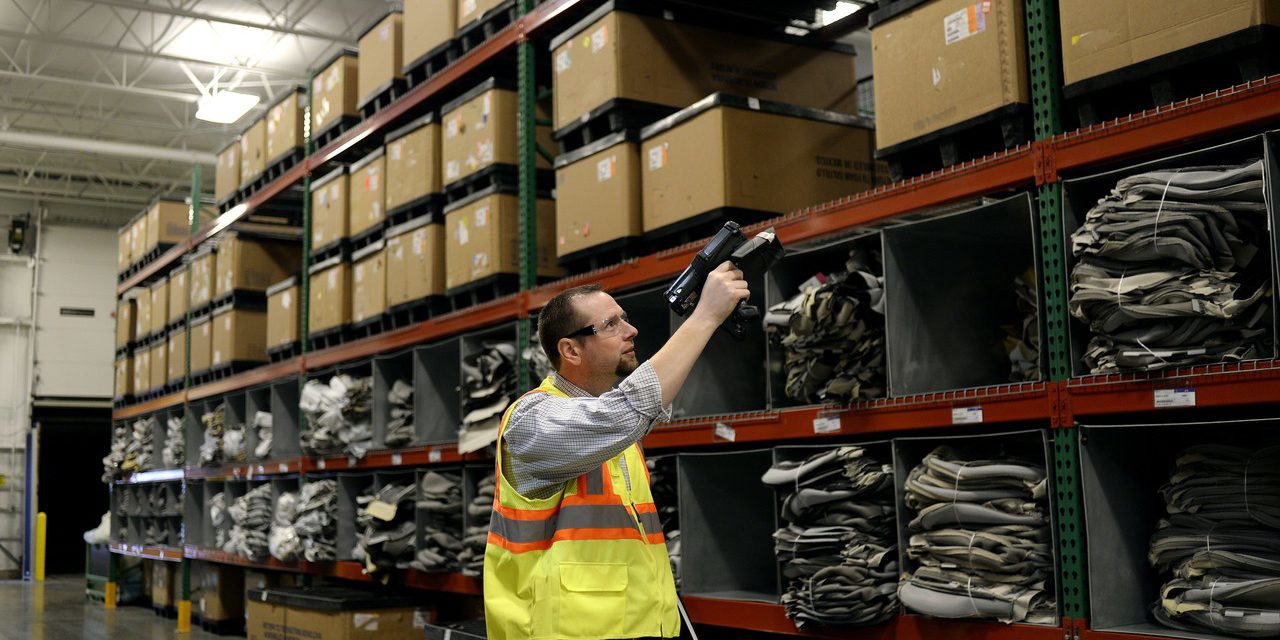Johnson Controls Inc. had a logistics mystery on its hands: thousands of reusable shipping boxes and storage racks were disappearing every year.
The auto-parts maker, which was spending a small fortune to replace the equipment, launched an investigation. It showed some were squirreled away at factories by Johnson Controls’ own plant managers, others were kept by customers. One box was discovered at a Michigan gun range; another had wound up storing bait on a fishing boat in Seattle.
The missing containers and racks are one example of the costly detours in logistics that vex the automotive industry’s sprawling supply chain. Under the just-in-time model—in which parts arrive at an auto plant just before they are needed on the production line—every delivery must arrive without fail. A large auto maker spends anywhere between $5 billion and $8 billion a year on logistics and transportation, making reducing loss and saving space in delivery trucks a priority.
“At a time when automotive production is going to 18 million vehicles in the U.S., these crates are worth their weight in gold,” said Brian Kelly, director of supply-chain management at Johnson Controls, who helped run the investigation. “You can’t move parts without them.”
To solve their missing-box problem, Mr. Kelly and Mark Klenczar, the Milwaukee-based company’s North America packaging-engineering manager, in 2012 started sticking radio-frequency identification, or RFID, tags on the sides of the containers. More than 830,000 containers and racks now have the tags, and soon all will. The tags, which cost between $1 and $5 each, emit signals that allow hand-held readers or towers to track their whereabouts as they move from shipping and receiving sites. As of last year, all Johnson Controls’ North American plants and warehouses were equipped with tag readers, Mr. Kelly said, and the company is now ordering fewer of the $150 containers and $1,500 racks as a result.
Many manufacturers and some big retailers tested RFID technology in their supply chains in the last two decades, but early on found the tags were too inaccurate to justify their cost. Today RFID accuracy is about 99%, up from between 50% and 60% when they were first introduced, said Sven Dharmani, global supply-chain practice chief at Ernst & Young. Improvements in readers allow workers to conduct inventory reviews in a matter of hours rather than an entire shift.
Although still rare in the heavy-industry sector, tags are common in high-end retail, particularly with luxury fashion brands that use tracking technology to fight shoplifting and counterfeiting. Last month, designer Vivienne Westwood Ltd. said it would weave RFID tags into clothing labels, allowing items to be tracked through the development process and authenticated at the store.
Auto-parts makers and other low-margin businesses have mostly stuck with cheaper alternatives, like bar code stickers. These passive trackers cost only a few cents each but are limited in the data they can provide and are easily damaged. Johnson Controls’ decision to start using RFID could change that, Mr. Dharmani said.
“Tracking containers is a plague across the auto industry,” he said. “The problem was no one wanted to go first and challenge the status quo. But with a supplier the size of Johnson Controls, you will see others in the industry begin to follow.”
Johnson Controls worked with North Canton, Ohio-based Surgere Inc. which helped tag containers and install readers at 37 North American plants and five distribution centers.
Johnson Controls, a company with $37.18 billion in annual revenue, purchased the tags and readers but left the tracking system with Surgere. The company runs its system on its own software. The information is pushed to Johnson Controls.
Robert Fink, Surgere’s director of technology performance, said companies contacted by Johnson Controls about missing boxes later purchased RFID tags from his firm. Surgere technology is used in 90 auto-related plants in North America, mostly in the U.S. Parts suppliers also are using the tags to help floor workers track inventories, among other uses, Mr. Fink said.
Johnson Controls continues to enhance how it uses its RFID tags, such as adding the ability to tell which door a container exits the plant through. The data also indicates which customer will receive the box, making it easier to track down a misdirected or lost container.
Mr. Kelly said he hopes someday to have RFID tags to keep tabs on millions of individual parts.
“We could get to a point that we not only know where all of our containers are but what is in each one without ever opening them up,” he said.
From: http://www.wsj.com/





